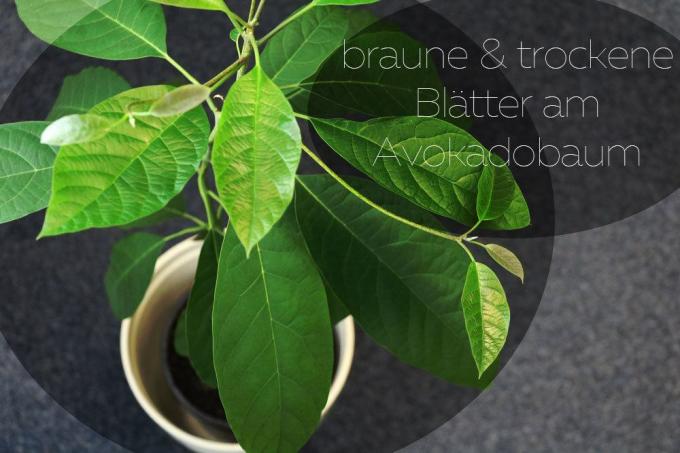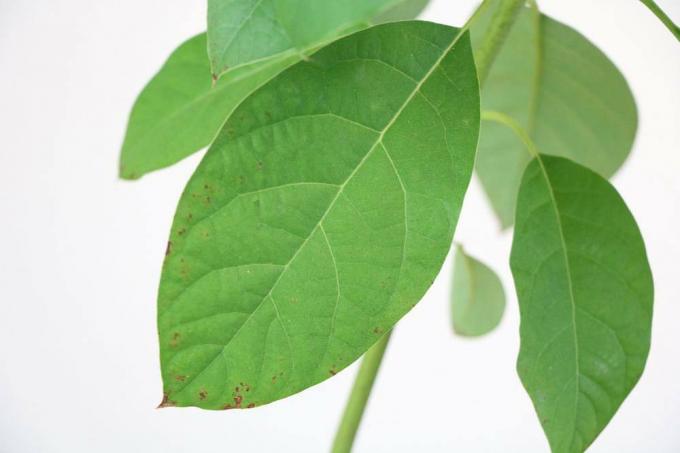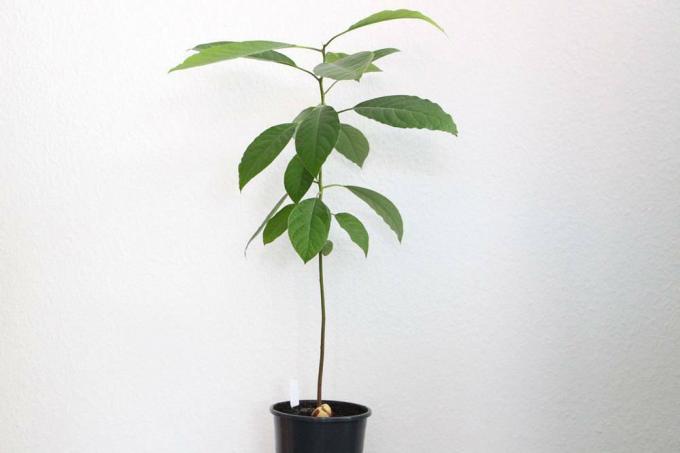
table of contents
- causes
- Lack of water
- Low humidity
- Waterlogging
- Overfertilization
- Wrong substrate
- Space problems
- Wrong location
Growing avocados within your own four walls is becoming increasingly popular. Just one core of the right avocado variety is enough to grow a tree with its flair that can be appealingly integrated into the living environment. It is not difficult to grow a butterfruit, but caring for it can lead to numerous mistakes that lead to brown and dried-up leaves.
Your avocado is getting brown or dry leaves? The big advantage: Usually only minor measures are necessary to bring the plant back into shape and enjoy the tropical plant. Before taking any action, you need to find out what is causing the problem.
causes
Brown or dried up leaves on the avocado are usually on Care errors due to the fact that these laurel plants (bot. Lauraceae) are extremely robust plants that are rarely attacked by diseases or pests. However, since the avocado is dependent on precise care measures, small mistakes can lead to a stressful situation, which manifests itself in brown and dry leaves. There is not just one cause to look out for, as avocados can be disturbed by several mistakes. The advantage: For all of these there is a suitable solution with which you can save your little tree.
Lack of water
The lack of water is the most common cause of brown and dry leaves on Persea americana. Since it is a tropical plant, it needs sufficient moisture and does not survive longer periods of drought. You can tell whether it is a lack of water by the following symptoms:
- Earth very dried out
- Leaves turn brownish at the tip and dry
- in severe cases they crumble
- can expand to the edge of the leaf
This problem often occurs on particularly hot days or in winter when the crop is too close to the heater and therefore gets a lot of dry air. In this case, increase the water additions and see if the avocado recovers. Only when whole leaves have dried up or have turned brown are they removed. Don't forget: watering takes place when the avocado is drooping. Only from this point on does she have to rely on the addition of water.
Low humidity
A low level of humidity is often consistent with too much drought. This is especially the case in winter, since German apartments are mostly dry and only have stagnant air. This is particularly noticeable in leaves, which, despite regular addition of water, dry out more and more and turn brown. In this case, proceed as follows:
- Use lukewarm water
- this should be low in lime
- Spray the leaves directly every two to three days
This is very important over the winter. You don't need to spray the leaves over the summer unless it is very hot and the plant is in direct sunlight. You do not need any special utensils for this care step, a conventional, clean spray bottle is sufficient. Alternatively, you can place a humidifier close to the avocado. This regulates this automatically and you can save yourself the additional spraying.

tip: In addition to the actual humidity in the room, the leaves can dry out if the plant is in direct draft. For this reason, it is best to choose a place away from windows and doors that are opened frequently, especially in winter.
Waterlogging
Waterlogging is usually worse than drought. This causes the roots to rot and this rot can continue into the trunk. Check your substrate and if it is too wet, repot the plant immediately. When repotting, be sure to check the roots and remove any rotten and dead ones with a sharp knife. This is the only way to avoid the spread of rot, which could potentially result in the death of your entire plant. Feel free to remove more of the roots. Avocados are sturdy and can withstand this as long as everything that has rotten has been removed.
Overfertilization
Many people like to over-fertilize avocados, although the plants are still quite frugal in the first four to six months. During this time, they use the nutrients from the core and can thus expel them quickly and effectively. You should therefore only fertilize half a year after driving it out of the core. The plants are fertilized every four to six weeks with one of the following fertilizers, which are added to the irrigation water:
- Citrus fertilizer
- Green plant fertilizer
- Balcony plant fertilizer
- Universal fertilizer
- Container plant fertilizer
Wrong substrate
Make sure you use the right substrate for the avocado. The trees often do not tolerate classic soil and react to it with drying and brownish leaves. For the tropical plants is above all Palm soil recommended as it offers the best properties for growth. Compacting substrate is particularly bad as this prevents the sensitive roots from functioning. So repot your avocados with the right soil to restore vitality to the leaves.
Space problems
Check whether the roots of the Persea americana reach the edge of the pot or whether there is still enough space. The more concentrated the avocado, the more difficult it will be for it to supply itself with nutrients. The result is dry and brown leaves that, despite ideal care, simply show no improvement. If this is the case, simply repot as usual and give the plant a little more space. The effect is usually noticeable within a short time.
Wrong location
Is your avocado standing in the blazing sun? Then the plant suffers from sunburn and heat stress. The laurel family should never stand in direct sun for too long, as this can cause them to suffer from sunburn that ends in the symptoms mentioned above. The location should be as follows:
- Light requirement: bright
- no direct sun, especially around noon
- only old avocados can stand the midday sun
In summer you can put your specimen in the garden, because the fresh air and the sun optimize its growth outdoors. It also protects against fermentation, which is a typical problem with avocados. Simply move your copy and it will feel comfortable in a suitable location.





